Like all the world's coral reefs, the Great Barrier Reef under threat. Climate change, storm damage, deadly crown-of-thorns starfish (CoTS) outbreaks and pollution have all impacted the Reef over recent years. But the world's largest living organism is still a spectacular sight. Because it's so important, there are plenty of Great Barrier Reef heroes caring for this World Heritage site. Many people are working directly to help save this global icon. Their projects range from education programs to plastic-pollution control, CoTS eradication, coral nurseries, renewable-energy development and responsible stewardship by marine-park tourism organizations. Here are a few of the heroes working to save this world treasure every day.
Peter Gash/Lady Elliot Island
Lady Elliot Island Eco Resort's Peter Gash has successfully managed the regeneration of flora and fauna on this tiny island. Simultaneously, he also developed the island's renewable energy resources. The island, a hotspot for manta rays, now plays host to thousands of nesting seabirds. Furthermore, over 80 percent of the island's energy requirements now come from a combined solar and battery-storage system.
Wendy Morris/The Reef Society
Wendy Morris founded The Reef Society to promote stories of Great Barrier Reef creatures through art, photography and clothing. Many years ago, she also founded Reef Biosearch, the first marine-biologist-led interpretive company to work commercially on the Great Barrier Reef, which became a prototype for eco-tourism operations.
Col McKenzie
Col McKenzie heads up the Association of Marine Park Tourism Operators (APMTO), which manages stewardship of the reef. He and his wife Margie have been fighting for the reef since the 1990s. Another of their projects is management of the CoTS eradication program.
Libby Edge/Eco Barge Clean Seas
Libby Edge's Eco Barge Clean Seas program has been removing plastic waste from the Whitsunday Islands for almost 10 years. The program has not only helped save the lives of marine animals, but also educated locals to reduce land-based litter in the tropical north.
Fitzroy Island projects
The Reef Restoration Foundation, led by Stewart Christie, has established the reef's first coral gardening and restoration project at Fitzroy island. As a result of their work, the island installed the first of many coral-tree gardens. The project has strong tourism industry support.
Also at Fitzroy Island, Jenny Gilbert heads up the Cairns Turtle Rehabilitation Center, a volunteer-operated, non-profit organization dedicated to the rehabilitation of sick and injured turtles since 2000.
Andy Ridley/Citizens of the Great Barrier Reef
The newest program established to save the Reef is Citizens of the Great Barrier Reef, headed up by Andy Ridley, founder of Earth Hour, which aims to unite people across the globe with this one aim in mind.
You can help too. Here are few of the best ways that you can help save the GBR for future generations.
Visit the Great Barrier Reef
"Come and see why it's worth saving," says Col McKenzie. "The more tourism dollars we spend on Great Barrier Reef operators, the more funding will go to local projects actively working to conserve the reef."
By visiting the GBR you'll see for yourself just how beautiful it is and have a greater understanding why it needs your continued passion to save it.
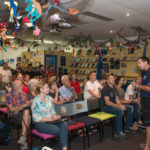
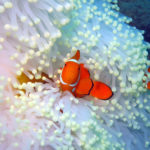
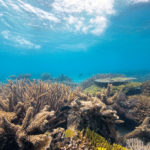
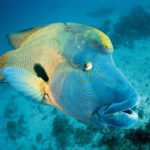
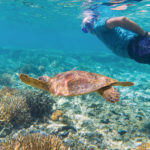
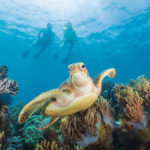
Learn about the reef
Most boats that visit the outer reef have a marine biologist on board, so take advantage of the opportunity to ask as many questions as you like. Marine biologist Marie Taylor has been running educational programs for Reef Magic for many years. She has also engaged the local indigenous community and incorporates the reef's spiritual story into her presentations.
You can also attend Reef Teach, a two-hour evening presentation where you'll learn everything about the reef, including how coral reefs form, the difference between soft and hard corals, and how to identify fish.
Possibly the best way to learn more about the Reef is to visit Reef HQ in Townsville. In this aquarium and research center you'll find the world's largest-living coral reef in an aquarium — it even has an annual spawning event. It's positively bursting at the seams with information on how this complicated and biodiverse habitat works, the various threats to the reef and what scientists are doing to save it.
Learn how to help
You can contribute to several citizen-science projects by helping to monitor the reef's health. These include Eye on the Reef, Coral Watch and ReefSearch.
Sign up for ReefSearch and you'll receive a field guide explaining how you can contribute valuable data to scientists studying the reef's health. Henceforth, you'll spend 10 minutes of each dive, snorkel or reef walk looking for key species, checking coral condition, and making note of any rubbish found.
The University of Queensland manages Coral Watch, which is focused on bleaching events. Your Coral Watch kit comes with a color-coded slate that helps you identify and record coral colors that you can then upload via an app to add to a global database.
The Great Barrier Reef Marine Park Authority (GRMPA) manages Eye on the Reef. Download the Eye on the Reef app or login online to report your sightings directly to them. A sighting can be anything a reef-user feels important enough to report. These can include incidents like a bleaching event, crown-of-thorns starfish, stranded or sick wildlife and coral damage.
Contribute
You can contribute to three local projects directly. As a result, you can be sure that 100 percent of your donation goes directly to saving the reef.
The Great Barrier Reef Research Foundation, the Reef Rainforest Research Center, and the Citizens of the Great Barrier Reef are all set up for crowdfunding. All your contributions will go directly into GBR initiatives.
Become a citizen of the Great Barrier Reef
Citizens of the Great Barrier Reef works to connect people all over the world with one aim in mind — to save the reef. It's easy to become a Citizen: simply sign up, choose your color and pick an 'action' to complete. You can choose to:
- Bring your own bag
- Bring your own bottle
- Say no to straws
- Don't leave leftovers
- Carry your own cup
- Sponsor a CoTS diver
"As part of the Citizens community, every action you complete, no matter how small, will contribute to the combined impact of many," says founder Andy Ridley. "Through the cumulative effect of individual choices, we can achieve large-scale positive change
The post Great Barrier Reef Heroes appeared first on Scuba Diver Life.
from Scuba Diver Life https://ift.tt/2ocZTDN
No comments:
Post a Comment